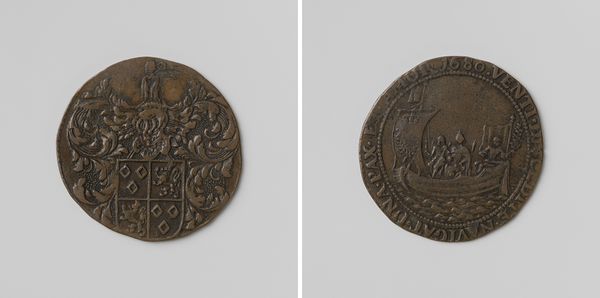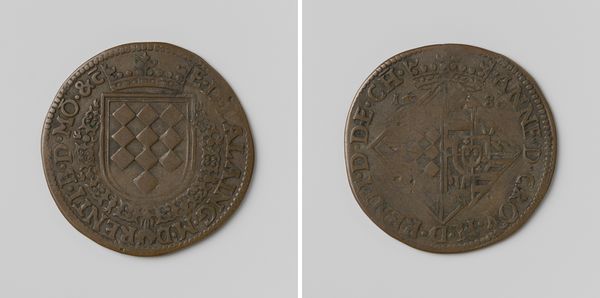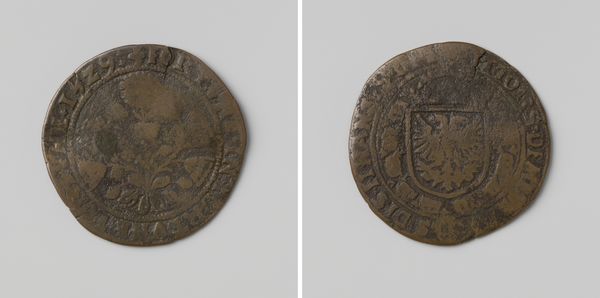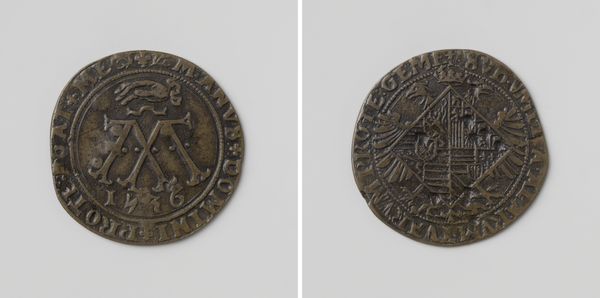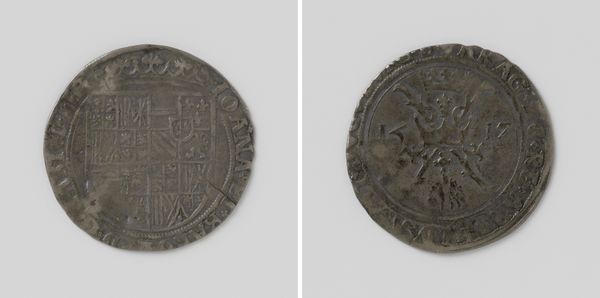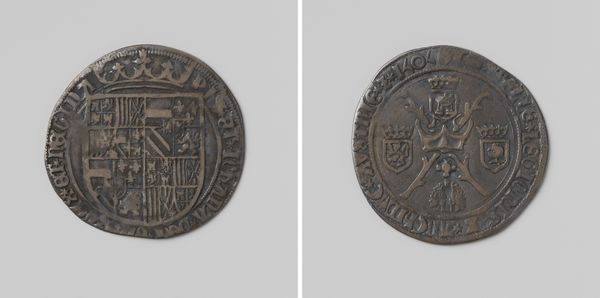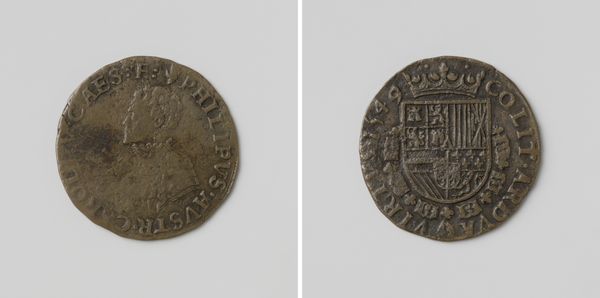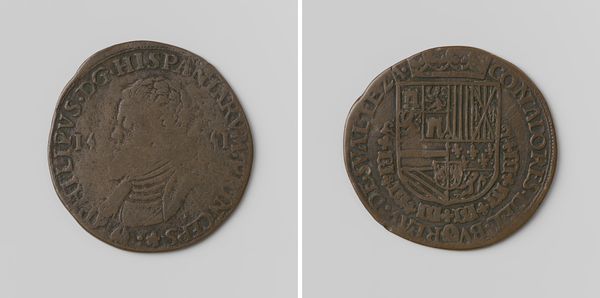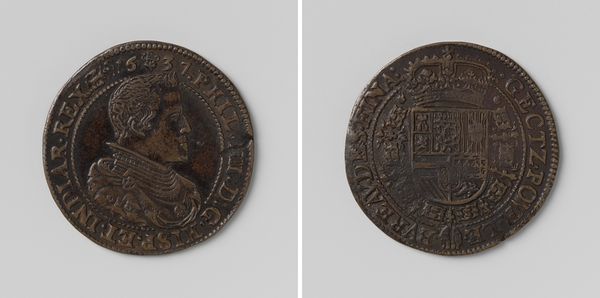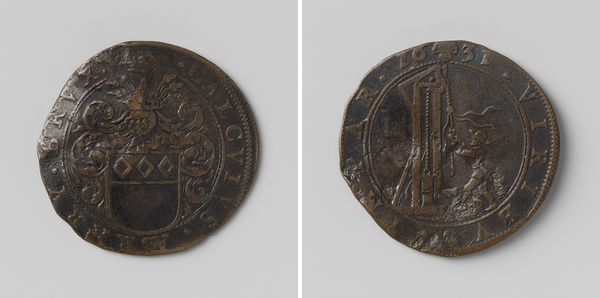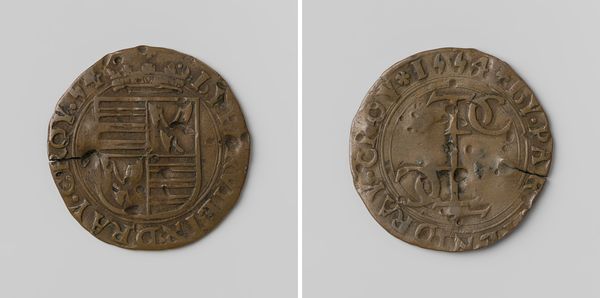
Inhuldiging van Karel als heer der Nederlanden, rekenpenning van de hofmeester 1515
0:00
0:00
#
natural stone pattern
#
3d sculpting
#
sculpture
#
detailed texture
#
sculptural image
#
unrealistic statue
#
stoneware
#
sculpting
#
carved
#
statue
Dimensions: diameter 2.7 cm, weight 3.33 gr
Copyright: Rijks Museum: Open Domain
Curator: This intriguing object is a "rekenpenning," or counting token, commemorating Charles' inauguration as Lord of the Netherlands in 1515. Editor: It has a stark formality. The profile, the grid…it’s a bit like looking at power distilled down to symbolic geometries. It projects authority through controlled visual elements. Curator: Right, tokens like this one, made anonymously, weren't just celebratory trinkets. They served a crucial function within the complex accounting practices of the Burgundian-Habsburg court, materializing transactions and privileges. Consider the economic networks necessary to mint and distribute such items, signaling Habsburg power from the top down. Editor: That's certainly one way to frame it. Visually, the surface detail is extraordinary. Note the intricate text around the border of each side, carefully etched to catch light. The high-relief portrait, crowned and armed, projects strength, doesn't it? And then you turn it over, to this meticulously structured grid, twelve distinct emblems… it feels calculated. Curator: Yes, that calculation goes hand in hand with what I said earlier! That heraldic grid embodies dynastic ambitions. Each quarter represents a territory under Charles’ control. It's an explicit articulation of power, of resources controlled by the Habsburgs at a specific moment. This physical token becomes a tool in exercising dominance. Editor: While understanding its context of production provides a useful background, looking at the overall effect is powerful in itself. The interplay between Charles' portrait on one side and those symbols on the reverse feels almost theatrical. The contrast in visual design reinforces both his personal authority, and the territories he ruled. Curator: It's hard to ignore that. We can learn so much about power by looking at how labor was organized, who benefited from its distribution, and how accounting practices became physical and celebrated the existing status quo. Editor: Indeed. Through visual examination of composition and craftsmanship, alongside an understanding of historical forces that shape artmaking and perception, one begins to understand what went into such art objects from the era. Curator: Absolutely, let us proceed to the next item! Editor: A fine decision.
Comments
No comments
Be the first to comment and join the conversation on the ultimate creative platform.

